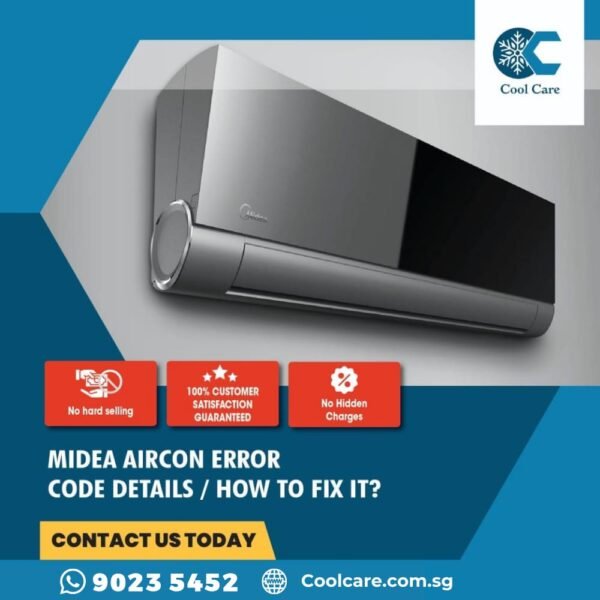
Picture this: your Midea air conditioner is like a guardian of your indoor climate, tirelessly working to keep your environment comfortable. But just like any diligent guardian, it sometimes needs to signal that something’s off. The “E1” code is like a little flag that says, “Hey, something needs attention here!” Ignoring it is similar to shutting out a friend’s advice—you might miss something crucial. So, let’s dive into what this error code means and why it’s important not to dismiss it.
What Does the E1 Error Code Mean?
When you spot the “E1” error code on your Midea air conditioner, it’s trying to communicate an issue related to the unit’s temperature sensors or possibly a problem with its electronic controls. These sensors are vital because they help your AC balance the temperature in your space, much like a thermostat does in your home. If these sensors aren’t functioning correctly, your AC might not cool or heat efficiently, which can lead to discomfort.
Think of these sensors as the eyes and ears of your air conditioner. Just like you’re unable to perform effectively if you can’t see or hear properly, your AC unit can’t maintain your desired temperature if its sensors are failing. The “E1” code could indicate that one of these sensors is either damaged or misreading the temperature, which can happen due to a variety of reasons including dust accumulation, sensor displacement, or even internal wiring issues.
Ignoring the “E1” error might lead to more serious problems down the line. For instance, consistent failure to regulate temperature could cause the unit to overwork, leading to higher energy bills or even potential damage to the compressor. The compressor is like the heart of your AC system—if it goes, so does the comfort it provides. So, addressing the “E1” code is crucial for maintaining the longevity and efficiency of your air conditioner.
Steps to Take When You See the E1 Error Code
So, you’ve noticed the “E1” code. What should you do next? First of all, don’t panic. Just like with any other appliance glitch, there are a series of steps you can take to diagnose and hopefully resolve the issue. You might want to start by turning off the unit and unplugging it from the power source. This gives the system a chance to reset, much like rebooting your computer when it’s acting up.
Next, consult your Midea air conditioner’s manual. Most of these manuals have a troubleshooting section that can help you identify potential causes of the error. The manual is like a road map to your air conditioner’s inner workings, offering guidance on what might be wrong and how to fix it. You can also try cleaning the air filter and checking for any visible obstructions in the unit, as dust and debris can sometimes cause sensor issues.
If these basic steps don’t resolve the error, it might be time to call in a professional. Air conditioning technicians are equipped with the tools and knowledge to delve deeper into the problem and provide a solution. Think of them as the mechanics for the internal workings of your AC. They can assess the sensors and wiring to determine if repairs or replacements are necessary.
Preventive Measures to Avoid Future E1 Errors
Now that you’ve tackled the “E1” error, let’s talk prevention. Keeping your Midea air conditioner running smoothly can save you from future headaches and ensure it lives a long, healthy life. Regular maintenance is key, just like you would regularly check the oil and tires on a car. Schedule regular checkups for your AC with a professional to keep the sensors and other critical parts in tip-top shape.
Maintaining a clean environment around your air conditioner is also crucial. Dust and dirt might seem harmless, but when they accumulate, they can cause your unit to falter. Keeping the area around your AC clean and ensuring the filters are changed regularly can help prevent many sensor-related issues.
Lastly, try to be mindful of how hard you’re working your air conditioner. During extremely hot or cold days, consider using fans or space heaters to assist your AC, thus reducing its workload. By applying these preventive strategies, you can minimize the chances of encountering the “E1” error code in the future.
Wrapping this up, addressing error codes like “E1” promptly and effectively ensures that your Midea air conditioner continues to provide comfort without interruptions, keeping your home the haven it’s meant to be. So the next time you spot that code, don’t ignore it; instead, see it as an opportunity to ensure your AC is running as smoothly as possible.